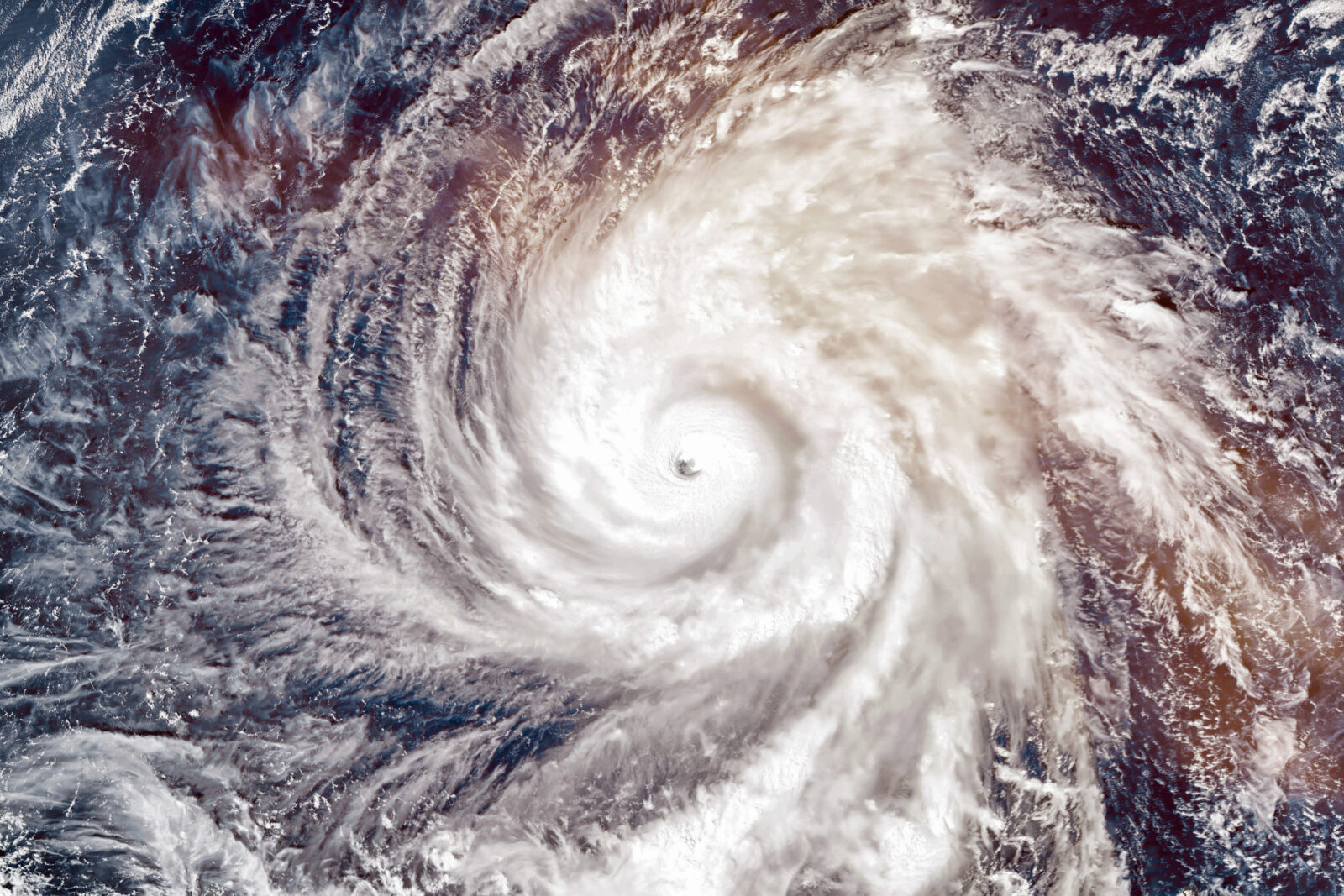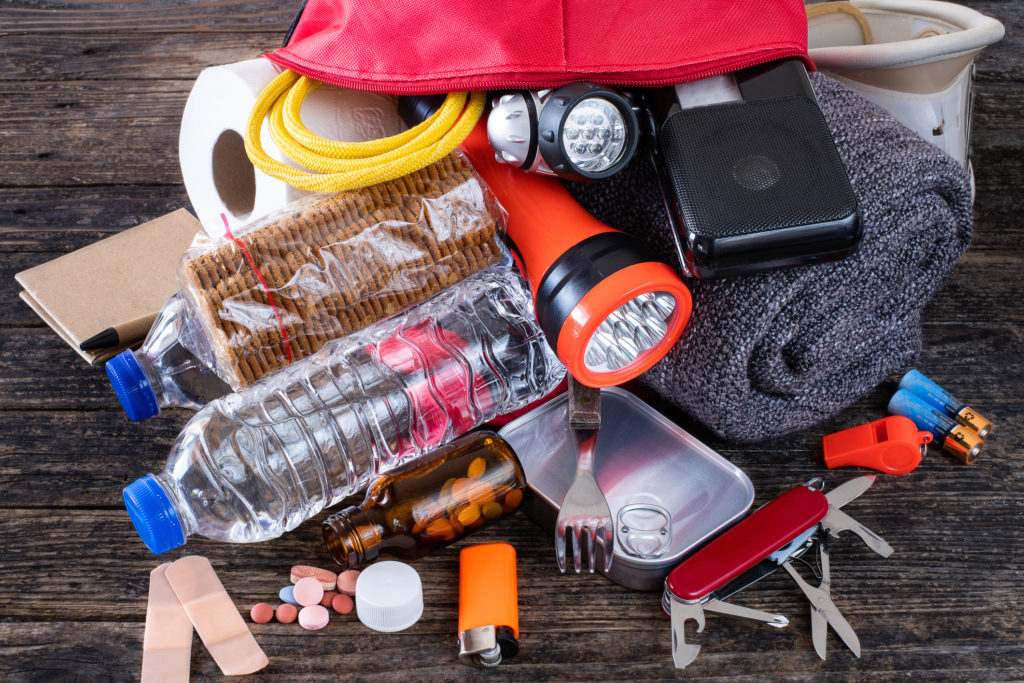What’s Your Weather Emergency Plan?
 September 12, 2022
September 12, 2022Fall is usually the peak of hurricane season, and sometimes those storms make a big mess here in the Lehigh Valley. And Old Man Winter isn’t far behind, bringing his own set of weather challenges.
In times of severe weather, having a weather emergency plan can be a lifesaver for you and your family. You might have to deal with a loss of power, a disruption to your water service, flooding, or other challenges. Here’s how you can make an emergency plan, create a disaster kit, and be prepared for severe weather, today.
Make a Plan
The National Weather Service has a page dedicated to what you should do in the event of a flood. Some of the tips include Turn Around, Don’t Drown if you reach a flooded road; definitions of flood hazards such as flash floods, storm surges, river floods and more; and flood safety tips. It’s a good place to start on your emergency plan.
However, we also recommend following the advice of agencies and organizations such as The American Red Cross, the CDC, and Ready.gov. Their weather emergency tips include:
1.) Complete a contact card (click for download) for each member of the family, which includes home, cell and work phone numbers, social media identification (for instance, Facebook and Twitter usernames); additional contact information for schools, workplaces, friends and other family members; email addresses; important medical information, and more.
2.) Choose an emergency contact, such as a family member, and memorize their phone number.
3.) Teach everyone how to text — from your preschooler to grandma — and ensure everyone knows how to use a cell phone.
4.) Identify the safe spots in your home for each type of natural disaster. This is key to any emergency plan. During a tornado or other storm with high winds, that’s a low spot away from windows. In an earthquake, it’s in a sturdy area, such as under a well-built desk or table.
5.) Identify several escape routes from your house to use in case of a fire, flood, or other natural disaster.
6.) Pick out several meeting places, and make sure everyone knows where they are. It could be outside of your house near a shed in case of a fire, or at a neighbor’s house, or somewhere outside of the neighborhood, like your Aunt Patty’s house.
7.) Identify family members’ responsibilities in the event of an emergency. For instance, Mom grabs the emergency kit; Dad is in charge of getting the car; a son gathers blankets; a daughter rounds up pets.
8.) Teach your children how to call 911, and when to use it.

9.) Make a weather emergency kit, which includes things like any medication family members require; first-aid supplies; flashlights; clean water; and more.
10.) Have an emergency plan for your pets.
11.) Know where to turn off your home’s electrical, water and gas supplies.
12.) Plastic 2-liter soda bottles and juice bottles can be rinsed out after use, then filled with water, capped, and placed in a freezer. If the power goes out, they’ll provide some backup cooling power and extend the life of your frozen food. They can also be a great source of clean water.
13.) Make sure your home insurance is up-to-date, and review whether you should have flood insurance or other natural disaster insurance.
What To Include in an Emergency Kit
Here are some tips from Ready.Gov to help you create a weather emergency supply kit for storms all year round:
- Water, one gallon of water per person per day for at least three days, for drinking and sanitation
- Food, at least a three-day supply of non-perishable food
- Battery-powered or hand crank radio and a NOAA Weather Radio with tone alert and extra batteries for both
- Flashlight and extra batteries
- First aid kit(s)
- Whistle to signal for help
- Face masks, plastic sheeting and duct tape to shelter-in-place
- Moist towelettes, garbage bags and plastic ties for personal sanitation
- Wrench or pliers to turn off utilities
- Can opener for food (if kit contains canned food)
- Local maps
- Cell phone with chargers, inverter or solar charger
- Prescription medications
Additional Items to Consider
- Over-the-counter medications
- Glasses/contacts
- Infant formula and diapers
- Sleeping bag or warm blanket for each person. Consider additional bedding if you live in a cold-weather climate.
- Pet food and extra water for your pet
- Cash or traveler’s checks and change
- Important family documents such as copies of insurance policies, identification and bank account records in a waterproof, portable container. You can use the downloadable Emergency Financial First Aid Kit (EFFAK) developed by Operation Hope, FEMA and Citizen Corps to help you organize your information.
- Emergency reference material such as a first aid book or information from www.ready.gov.
- Complete change of clothing including a long sleeved shirt, long pants and sturdy shoes. Consider additional clothing if you live in a cold-weather climate.
- Household chlorine bleach and medicine dropper – when PROPERLY diluted, bleach can be used as a disinfectant; in an emergency, it can be used to treat drinking water. Do not use scented, color-safe or bleaches with added cleaners.
- Fire Extinguisher
- Matches in a waterproof container
- Feminine supplies and personal hygiene items
- Mess kits, paper cups, plates and plastic utensils, paper towels
- Paper and pencil
- Books, games, puzzles or other activities for children
What To Do Before a Storm
Weather forecasters are usually able to give plenty of warning before a big storm hits. Here are a few lat-minute things you can do to prepare.
- Charge your cell phones, and limit use to preserve battery life. Having a backup power source, like a solar charger or external battery bank, is also a good idea.
- Fill a bathtub with water so you have extra to flush toilets, clean dishes, wash yourself or more.
- Clean up the yard — if it gets windy, debris can blow and become a projectile, shattering windows or worse.
- Replace/check smoke detector, carbon monoxide detector batteries.
- Ensure you have an adequate supply of fuel if you have a generator or kerosene heater.
- Have a propane or charcoal grill? Ensure you have an adequate supply of fuel—you can always use them to cook if you can’t use your stove.
- Listen to the radio or TV for updates.
- Know how to use the manual release cord on your electric garage door opener. If the power goes out, pulling the cord releases a lock that will allow you to open the door by hand.
- Know where the shut-offs are for your electric and natural gas. You may need to shut them off if there’s a flood or other damage to your home.
- Fuel up your car. You may need to evacuate. Also, conditions after the storm might make getting to a gas station impossible for some time.
What Not To Do During a Storm
- If it’s an electrical storm, avoid windows, doors, porches, and concrete (lightning can travel through metal reinforcement bar buried in the concrete). Stay off the phone if it’s a connected landline, and don’t talk on a cell phone if it’s plugged in—a lightning strike to a power supply can send the electricity right through the line. Same with tablets, laptops, and other devices that can be connected to a power source. Avoid running water — no showers, washing dishes, etc. Water and the metal pipes it runs through are excellent conductors.
- Don’t run a generator indoors! They emit carbon monoxide, which is an odorless, colorless gas that kills about 430 people in the U.S. every year, and sends another 50,000 to the hospital. Always run generators outdoors.
- Don’t use a grill indoors! All fuels can emit carbon monoxide, even propane!
- Don’t open windows during a windstorm! If it’s an intense storm, opening a window can allow a gust of air to enter the home with enough force to do serious damage—including lifting off your roof!
- Don’t use candles! Opt for flashlights or battery-powered lanterns instead. It’s too easy to knock over or forget a candle, causing a fire.